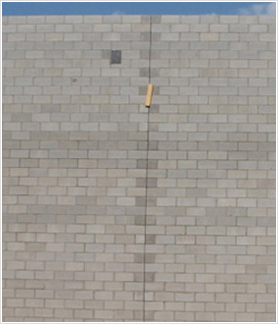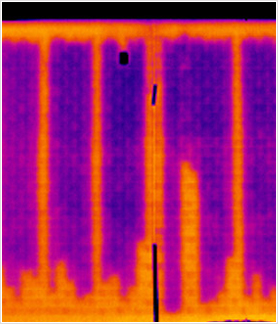You might think that the only way to know whether the grouted cells, bond beams, insulation and other components of a CMU (Concrete Masonry Unit) wall are properly placed, is to open the wall with a hammer or drill, where the grout or insulation is supposed to be, and see if it is there.
This test is inadequate, because this sample is much too small (often less than one ten thousandth of a percent). Also, the tiny sample does not show where blockages (to the proper filling of insulation) and/or too much grout exists. The only other effective options are to X-ray the walls or tear them down, which are both extremely expensive.
There is a method that is accurate, non-destructive and inexpensive. This is the way to see the grouted cells in the entire wall section. This infrared testing method can be performed at any time during the construction process without interrupting any other trades or affecting the progress of the rest of the building.


Structural problems in the CMU walls of school buildings are a real problem. If the wall receives a trauma like a hurricane force wind or tornado and students or workers inside the building are hurt, the legal ramifications can be devastating. A forensic examination of a block wall laid on the ground post-event will most likely reveal some structural deficiencies. The building owner, architect, structural engineer, general contractor and masonry contractor can and probably will be held accountable.
However, two benefits arise from having an infrared test performed on your newly constructed CMU walls. First, a documented record of the grouted cells and other structural components (in-situ) is created. Secondly, when and if deficiencies are found, a report can be generated so that corrections can be made without causing delays and with surgical precision during construction.
The schools system gets what they paid for and the designers can ‘literally’ see that their specifications have been followed.


